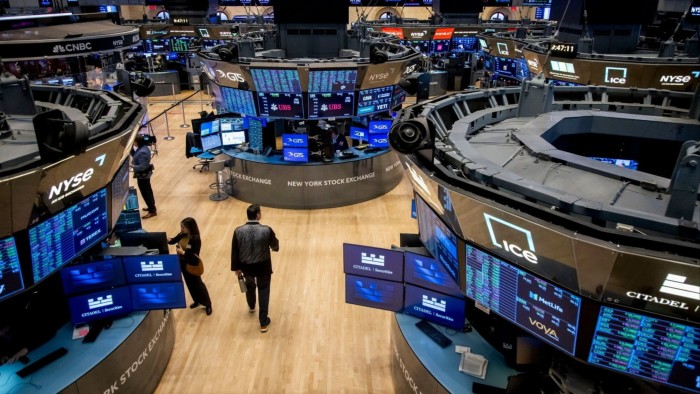The US stock market is on a roll. The S&P 500 index closed 2024 up 23 per cent, marking its second consecutive annual gain above 20 per cent. This year, the average forecast on Wall Street is for around a further 10 per cent rise. Households are bullish too: the share of Americans expecting equity prices to rise is at its highest in decades.
The exuberance is jarring for two reasons. First, a majority of economists expect president-elect Donald Trump’s “Maganomics” agenda to have a negative impact on America’s economic growth, according to the Financial Times’ annual poll. Second, US asset valuations are already pretty lofty. Excluding the peak of the dotcom bubble, cyclically adjusted price-to-earnings ratios for stocks are near their most expensive in over a century. Optimism over artificial intelligence is largely behind the surge. So can US equities really sustain their bull run in 2025?
It is possible. For starters, though economic growth and stock market performance are related, they do not always neatly align. Vibes matter. American equities jumped following the November election. That partly reflects a belief that a business-friendly Trump administration would not put the market rally at risk. Next, even if economic activity weakens this year, investors still want exposure to AI, given faith in its transformative potential. If both the Trump and tech optimism pan out, then stocks could keep rising.
Economists’ forecasts also appear to be placing more emphasis on the cost-raising and inflationary effects of Trump’s tariff agenda, relative to his plan to cut red-tape and taxes, which would support companies’ margins. If, however, the president-elect’s zeal for import levies turns out to be more rhetoric than reality, then the economic backdrop could support financial markets. The US Federal Reserve may be able to cut interest rates further and faster (albeit depending on how much fiscal policy is loosened).
But how can investors have any conviction about what Trump will actually do? On Monday, markets see-sawed after the president-elect rebutted an earlier news report that claimed he would water down his tariff plans. He has a tendency to shoot from the hip on major policy decisions, via social media. His plans for financial market deregulation could also foment stability risks. Cryptocurrencies have surged since the election. The booming private capital market — which has concerned regulators for its opacity — is hoping to lobby the incoming administration for more widespread investor adoption.
Signs of fragility are also appearing across US markets. Equity and corporate bond valuations are stretched, and investors are taking on more risk. Last year, Wall Street’s appetite for returns sparked the largest frenzy for complex debt products since the run-up to the financial crisis. The concentration of investment in high-returning AI-linked equities is also a concern. The weight of the S&P 500’s top 10 stocks is at a historic high. AI earnings may continue to be strong but just one weaker-than-expected quarterly tech result could still cause an outsized upset.
In a speech on Monday, Fed governor Lisa Cook warned that financial markets may be “priced to perfection and, therefore, susceptible to large declines, which could result from bad economic news or a change in investor sentiment”. The release of non-farm payrolls data on Friday will be the first big test for traders this year. It will not be the last. The combination of Trump’s capriciousness and frothy-looking markets is a recipe for volatility. Even investors with a determinedly optimistic outlook should prepare for a bumpy ride.
Read the full article here

